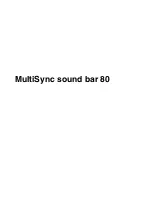
Installation and Programming Manual
Mircom Technologies Inc
All Rights Reserved
LT-1034 Rev.1
Page 47 of 54
8.0 EVACUATION PLAN (Household - per NFPA)
•
Pull together everyone in your household and make a plan. Walk
through your home and inspect all possible exits and escape routes.
Households with children should consider drawing a floor plan of your
home, marking two ways out of each room, including windows and
doors. Also, mark the location of each smoke alarm. For easy
planning, download NFPA's
escape planning grid
(PDF, 73 KB)
. This is
a great way to get children involved in fire safety in a non-threatening
way.
•
Make sure that you have at least one smoke alarm on every level of
your home.
•
Everyone in the household must understand
the escape plan. When you walk through
your plan, check to make sure the escape
routes are clear and doors and windows can
be opened easily.
•
Choose an outside meeting place (i.e.
neighbor's house, a light post, mailbox, or
stop sign) a safe distance in front of your
home where everyone can meet after they've escaped. Make sure to
mark the location of the meeting place on your escape plan.
•
Go outside to see if your street number is clearly visible from the road.
If not, paint it on the curb or install house numbers to ensure that
responding emergency personnel can find your home.
•
Have everyone memorize the emergency phone number of the fire
department. That way any member of the household can call from a
neighbor's home or a cellular phone once safely outside.
•
If there are infants, older adultsor family members with mobility
limitations make sure that someone is assigned to assist them in the
fire drill and in the event of an emergency. Assign a backup person
too, in case the designee is not home during the emergency.
•
If windows or doors in your home have security bars, make sure that
the bars have quick-release mechanisms inside so that they can be
opened immediately in an emergency. Quick-release mechanisms
won't compromise your security - but they will increase your chances of
safely escaping a home fire.
•
Tell guests or visitors to your home about your family's fire escape
plan. When staying overnight at other people's homes, ask about their
escape plan. If they don't have a plan in place, offer to help them make
one. This is especially important when children are permitted to attend
"sleepovers" at friends' homes.
•
Be fully prepared for a real fire: when a smoke alarm sounds, get out
immediately. Residents of high-rise and apartment buildings may be
safer "defending in place."
•
Once you're out, stay out! Under no circumstances should you ever go
back into a burning building. If someone is missing, inform the fire
department dispatcher when you call. Firefighters have the skills and
equipment to perform rescues.
Putting your plan to the test
•
Practice your home fire escape plan twice a year, making the drill as
realistic as possible.
•
Allow children to master fire escape planning and practice before
holding a fire drill at night when they are sleeping. The objective is to
practice, not to frighten, so telling children there will be a drill before
they go to bed can be as effective as a surprise drill.
Содержание Fire-Link ISD-1000 Series
Страница 2: ......









































